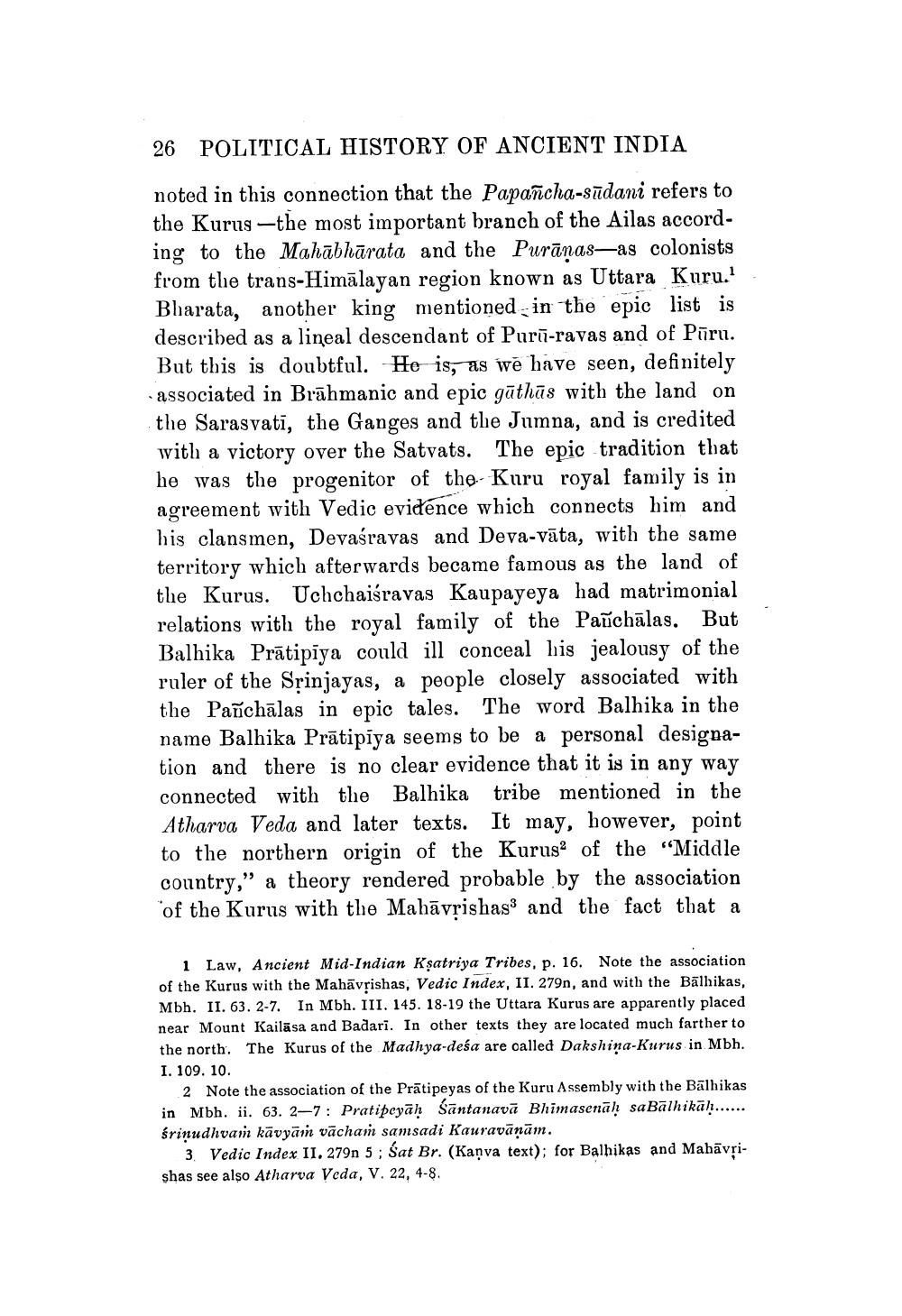________________
26 POLITICAL HISTORY OF ANCIENT INDIA
noted in this connection that the Papañcha-sudani refers to the Kurus -the most important branch of the Ailas according to the Mahabharata and the Puranas-as colonists from the trans-Himalayan region known as Uttara Kuru.1 Bharata, another king mentioned in the epic list is described as a lineal descendant of Puri-ravas and of Puru. But this is doubtful. He is, as we have seen, definitely associated in Brahmanic and epic guthus with the land on the Sarasvati, the Ganges and the Jumna, and is credited with a victory over the Satvats. The epic tradition that he was the progenitor of the Kuru royal family is in agreement with Vedic evidence which connects him and his clansmen, Devaśravas and Deva-vāta, with the same territory which afterwards became famous as the land of the Kurus. Uchchaiśravas Kaupayeya had matrimonial relations with the royal family of the Panchalas. But Balhika Pratipiya could ill conceal his jealousy of the ruler of the Srinjayas, a people closely associated with the Panchalas in epic tales. The word Balhika in the name Balhika Pratipiya seems to be a personal designation and there is no clear evidence that it is in any way connected with the Balhika tribe mentioned in the Atharva Veda and later texts. It may, however, point to the northern origin of the Kurus of the "Middle country," a theory rendered probable by the association of the Kurus with the Mahavṛishass and the fact that a
1 Law, Ancient Mid-Indian Ksatriya Tribes, p. 16. Note the association of the Kurus with the Mahavṛishas, Vedic Index, II. 279n, and with the Bälhikas, Mbh. II. 63. 2-7. In Mbh. III. 145. 18-19 the Uttara Kurus are apparently placed near Mount Kailasa and Badari. In other texts they are located much farther to the north. The Kurus of the Madhya-deśa are called Dakshina-Kurus in Mbh. I. 109. 10.
2 Note the association of the Pratipeyas of the Kuru Assembly with the Balhikas in Mbh. ii. 63. 2-7: Pratipeyaḥ Santanava Bhimasenaḥ saBalhikāḥ...... śrinudhvam kavyaṁ vacham samsadi Kauravāṇām.
3. Vedic Index II. 279n 5; Sat Br. (Kanva text); for Balhikas and Mahāvṛishas see also Atharva Veda, V. 22, 4-8.




